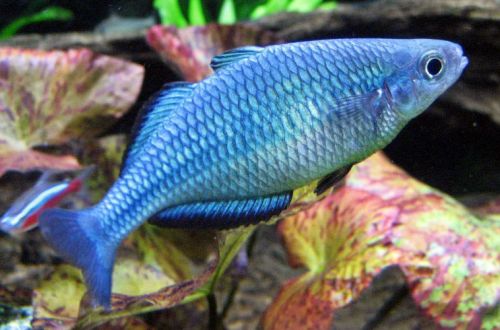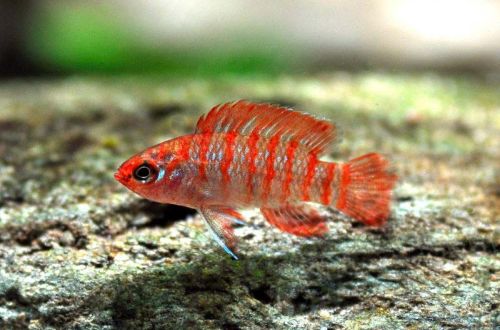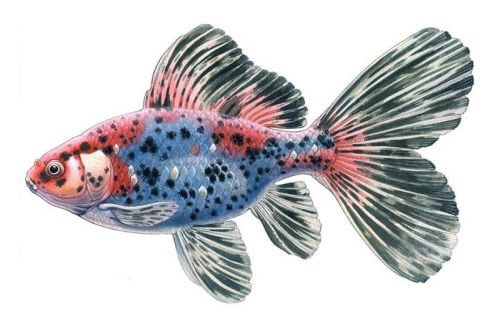
Rainbow Turquoise
Rainbow Turquoise or Lake Melanothenia, also known as Blue Melanothenia, scientific name Melanotaenia lacustris, belongs to the Melanotaeniidae family. Peaceful mobile fish, easy to keep and breed, although it requires the creation of specific water conditions. The latter limits the circle of possible fish for the addition. The quality of the food has a great influence on the coloration, therefore, depending on the suppliers, the appearance of adults can vary significantly. This is not a problem, if you provide a balanced diet after purchase, then your Rainbows will certainly please you with bright colors.

Contents
Habitat
It comes from Papua New Guinea, from the territory of the southern province of the Highlands. Endemic to the small mountain lake Kutubu (Lake Kutubu) and the Soro river flowing into it. In their natural habitat, the fish prefer to stay around aquatic vegetation, snags, submerged trees, etc.
In the wild, fish are endangered due to pollution of water resources due to the active construction of industrial enterprises.
Brief information:
- The volume of the aquarium – from 110 liters.
- Temperature – 20-25°C
- Value pH — 7.0–9.0
- Water hardness – medium to hard (10-25 dGH)
- Substrate type – any
- Lighting – subdued / moderate
- Brackish water – no
- Water movement – weak/absent
- The size of the fish is up to 12 cm.
- Food – any food
- Temperament – peaceful active
- Keeping a flock of at least 6-8 individuals
Description
Adults reach a length of about 12 cm. The color is bluish with a yellowish overflow of scales. The intensity of the blue color depends on the conditions of detention and diet. During the spawning period, the upper body acquires orange hues. Males are somewhat larger than females and have a more intense coloration.
Food
Like most relatives, Lake Melanothenia is unpretentious in food and accepts all types of popular food (dry, frozen, live). When choosing food, it is worth giving preference to products from well-known and trusted manufacturers, since a varied diet directly affects the color of the fish.
Maintenance and care, decoration of the aquarium
For a flock of 6-8 fish, you will need a tank of 110 liters or more. The design is arbitrary, provided that areas with dense vegetation and areas open for swimming are provided. Other decorative elements are selected at the discretion of the aquarist.
Maintaining stable water conditions, characterized by elevated pH and dGH values, as well as a narrow range of acceptable temperatures, is essential. The movement of water in the aquarium should be kept to a minimum. In this connection, pay special attention to the selection of a suitable filtration system, since it is it that is the main cause of the internal flow
Behavior and Compatibility
Peaceful and active, the Turquoise Rainbowfish pairs well with other species of comparable size and temperament. However, it interferes with overly slow species. Due to the special conditions of keeping (the need for alkaline hard water), the choice of potential tankmates will be limited. Do not combine with other Rainbows to avoid the appearance of hybrid offspring.
The content in the group is at least 6–8 individuals of both sexes. It is noted that in the presence of competitors, males tend to display brighter colors in color. This is one way to attract females.
Breeding / breeding
Breeding in a home aquarium does not cause much trouble, however, raising fry will not be so easy. Favorable conditions for the onset of the mating season are: alkaline water (pH 8.0) of medium hardness, temperature in the range of 22–24 ° C, regular feeding with quality feed. In the design, it is recommended to use clusters of undersized small-leaved plants or mosses, among which the female will lay eggs.
Spawning lasts about 2 weeks, the male can fertilize the clutches of several females at once. Parental instincts are not developed, but, as a rule, adult fish do not pose a threat to eggs and fry, which cannot be said about other aquarium neighbors. To protect future offspring, they are placed in a separate tank with identical water conditions, equipped with a simple airlift filter with a sponge, a lamp and a heater. Live or fake plants are welcome, no substrate required
The incubation period lasts 7-12 days. In the first days of life, the fry will feed on the remains of the egg sac, then it is necessary to feed microfeed, for example, ciliates. As young fish mature, they can switch to brine shrimp nauplii and other appropriately sized foods. It is worth remembering that most of the time they swim near the surface, so sinking food is unusable. They simply will not be eaten and will only become a source of water pollution.
Fish diseases
Health problems arise only in case of injuries or when kept in unsuitable conditions, which depresses the immune system and, as a result, provokes the occurrence of any disease. In the event of the appearance of the first symptoms, first of all, it is necessary to check the water for the excess of certain indicators or the presence of dangerous concentrations of toxic substances (nitrites, nitrates, ammonium, etc.). If deviations are found, bring all values back to normal and only then proceed with treatment. Read more about symptoms and treatments in the Aquarium Fish Diseases section.





